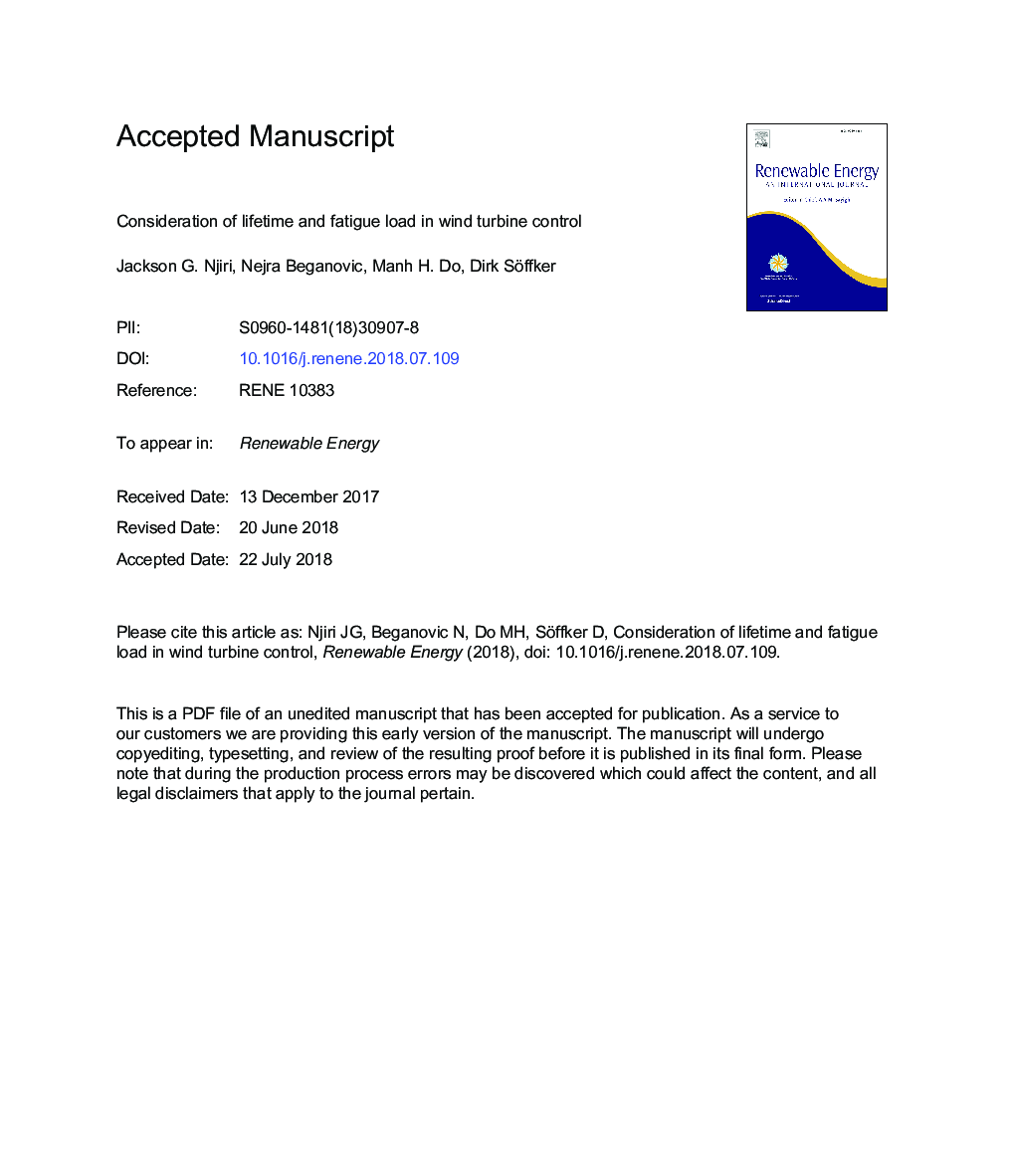| Article ID | Journal | Published Year | Pages | File Type |
|---|---|---|---|---|
| 6763691 | Renewable Energy | 2019 | 28 Pages |
Abstract
This paper proposes a novel scheme for extending lifetime of a wind energy conversion system (WECS) by integrating an online damage evaluation model into a control strategy for structural load reduction. Wind turbines are often subjected to continuously changing mechanical stress levels due to intermittent variability of wind speed and the effects of induced loads during power production, leading to premature failure before the desired lifetime is reached. A structural load reduction control strategy with variable gain is applied to define the compromise between power production and the extension of wind turbine service lifetime. In this paper, an online damage calculation model is used to determine damage levels in rotor blades then a variable gain control scheme is employed to offer a trade-off between power production and lifetime extension. Depending on damage accumulation level, power production is slightly sacrificed to extend the service lifetime of wind turbine or to reach given goals with respect to the desired useful lifetime. The results indicate that the proposed method can effectively extend the lifetime of wind turbine without significant reduction in power production. The proposed prognostic-based control approach serves as an example for a new type of service-oriented control algorithms, taking into account diagnostic results from monitoring and supervision algorithms.
Keywords
Related Topics
Physical Sciences and Engineering
Energy
Renewable Energy, Sustainability and the Environment
Authors
Jackson G. Njiri, Nejra Beganovic, Manh H. Do, Dirk Söffker,
